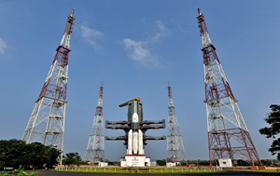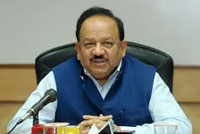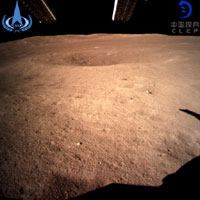January 2019 Science and Technology
Sakshi Education

- ISRO: Countdown to launch 31 satellites to begin on 23 Jan
The countdown for the tomorrow’s satellite launch using PSLV-C44 rocket will begin on 23 January, 2019 evening.
This will be ISRO’s first launch this year (2019). It would put in orbit the smallest ever satellite Kalamsat, made by students and the imaging satellite Microsat-R.
The PSLV rocket will fly in a new configuration with two strap-on motors, namely “DL Version.”
Once the satellites are parked in their intended transfer orbits, the fourth and final stage of the rocket will be taken to a circular path around the earth and used for a few experiments as a technology demonstrator.
In the past, the engine used to be left as a space junk once the mission is completed. But this time, it will be kept alive for more days for further use in space.
- PSLV-C44 to launch Kalamsat, Microsat satellite today (24, January, 2019)
The Indian Space Research Organization (ISRO) will launch a students' satellite Kalamsat and an imaging satellite Microsat-R from the Satish Dhawan Space Centre in Sriharikota on 24 January, 2019.
The national space agency's workhorse rocket, PSLV C44, carrying the satellites, is scheduled for liftoff at 11:27 pm. The countdown for the launch began at 7:37 last evening and is progressing smoothly.
Kalamsat is a payload developed by students and Chennai based Space Kidz India for the first time. Talking to AIR News, Mission Director of Kalamsat, Dr Srimathy Kesan said: ISRO Chairman Dr K Sivan said, the Microsat-R satellite is meant for the Defence Research and Development Organization (DRDO) purposes.
"ISRO will be using the aluminum tank for the first time in the fourth stage of the launch of PSLV C 44. This is to reduce the weight and increase the mass in the four-stage engine expendable rocket with alternating solid and liquid fuel.
About 14 minutes into the flight the rocket would eject Microsat R at an altitude of about 277 km.
This would begin to function at an altitude of 450 km in an hour and 40 minutes.
The Kalam sat is a 10 cm cube Nano satellite weighing about 1.2 kg and has a life span of about two months.
- ISRO successfully launches PSLV C44 carrying Kalamsat & imaging satellite Microsat R; PM congratulates scientists
The Indian Space Research Organization successfully launched the PSLV C 44 carrying kalamsat and Microsat R last night at 11.37 precisely.
Speaking after the launch, ISRO chairman, Dr.K.Sivan termed the mission as a grand success.
He said that the rocket precisely injected the Microsat R in its designated orbit. He said that Kalamsat was a great gift on the Republic Day for the Nation.
The midnight sky with a bright shining moon at the backdrop was a spectacular sight to those gathered at the Sathish Dhawan Space Centre Sriharikota.
Whistles and applause reached a crescendo even as the vehicle took off with a roar into the skies pushed by orange flames.
The scientists patted each other even as the successful separation stages took place as per the scheduled time.
Kalamsat is a ten cm cube weighing one kilogram communication satellite with a life span of two months.
- Doordarshan’s channel 'DD Science' along with internet-based channel 'India Science' launched

Science and Technology Minister Dr. Harshvardhan launched DD Science and India Science channels in New Delhi on 15 January, 2019. DD Science is Doordarshan's first ever daily slot on Science and Technology, while India Science is an internet-based channel.
Developing a scientific temperament is a critical necessity. He said the aim is to launch a 24/7 channel dedicated to science. People will benefit a lot from the information provided by these channels.
Doordarshan reaches over 3 crore houses in the country and would be an impact medium for popularization of science.
- India ranks third in research on artificial intelligence
India ranks third in the world in terms of high quality research publications in artificial intelligence (AI) but is at a significant distance from world leader China, according to an analysis by research agency Itihaasa, which was founded by Kris Gopalakrishnan, former CEO and co-founder of Infosys.
The agency computed the number of ‘citable documents’— the number of research publications in peer-reviewed journals — in the field of AI between 2013-2017 as listed out by Scimago, a compendium that tracks, trends in scientific research publications.
China stands first- India, while third in the world with 12,135 documents, trailed behind China with 37, 918 documents and the United States with 32,421 documents.
- However, when parsed by another metric ‘citations’— or the number of times an article is referenced — India ranked only fifth and trailed the United Kingdom, Canada, the U.S. and China. “This suggests that India must work at improving the quality of its research output in AI,” said Dayasindhu N., one of the authors of the report ‘Landscape of AI/ML (Machine Learning) Research In India’.
- Given India’s traditional strength in information technology and AI said to pose a transformation in industry and academic circles, the report was an attempt at mapping the state of AI-based research in India.
- There were only about 50 to 75 principal researchers in the AI-space in India and they were tended to collaborate with each other. The Indian Institutes of Technology and the Indian Institutes of Information Technology were among the key centers for AI research.
- The report authors interviewed 25 AI researchers across the country, who said that as of now “…there was adequate support and funding from the government and industry for AI research.”
- Healthcare, financial services, monsoon forecasting, retail and education were the key fields likely to benefit from AI and the field was “unlikely to lead” to a destruction of jobs — a key global concern regarding the field.
- India’s national think-tank, the NITI Ayog, last June released a discussion paper on the transformative potential of AI in India that said the country could add $1 trillion to its economy through integrating AI into its economy.
- China’s probe lands on far side of moon
 Chinese space probe touched down on the far side of the moon on 03 January, 2019, China’s space agency said, hailing the event as a historic first and a major achievement for the country’s space programme.
Chinese space probe touched down on the far side of the moon on 03 January, 2019, China’s space agency said, hailing the event as a historic first and a major achievement for the country’s space programme.
The Chang’e-4 lunar probe, launched in December, made the “soft landing” at 02.26 GMT and transmitted the first-ever “close range” image of the far side of the moon.
Chang’e-4 lunar probe Landing on the far side of the moon is undoubtedly one of the most challenging missions ever launched by any of the world’s superpowers.
China’s Chang’e-4 – a first probe ever to explore the dark side of the Moon, marking another milestone in its ambitious space programme
The Moon is tidally locked to Earth, rotating at the same rate that it orbits our planet, so the far side is never visible from Earth. The probe, the Chang’e-4, has made the first-ever soft landing on the far side of the Moon. Previous spacecraft have seen the far side of the Moon, but none has landed on it.
The far side of the moon known as ‘South Pole-Aitken Basin’ still remains a mystery among space scientists and by sending a probe there, China will outdo the historical achievements of the US and USSR.
Chang’e 4 is the fourth mission in the country’s lunar mission series which is being named after the Chinese moon goddess.
The tasks of the Chang’e-4 probe include low-frequency radio astronomical observation, surveying the terrain and landforms, detecting the mineral composition, and measuring the neutron radiation and neutral atoms to study the environment on the far side of the moon.
Published date : 18 Jan 2019 05:13PM



















